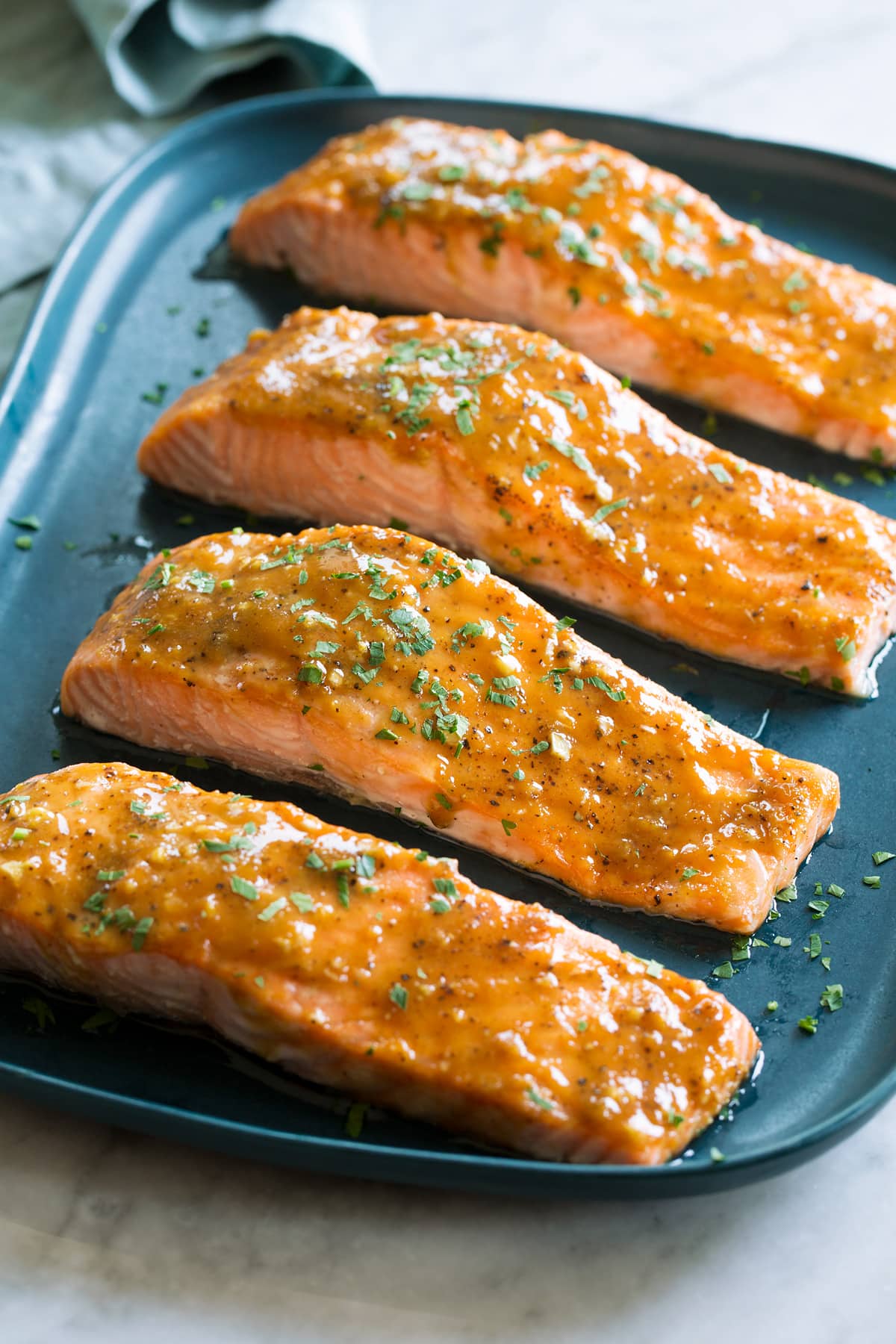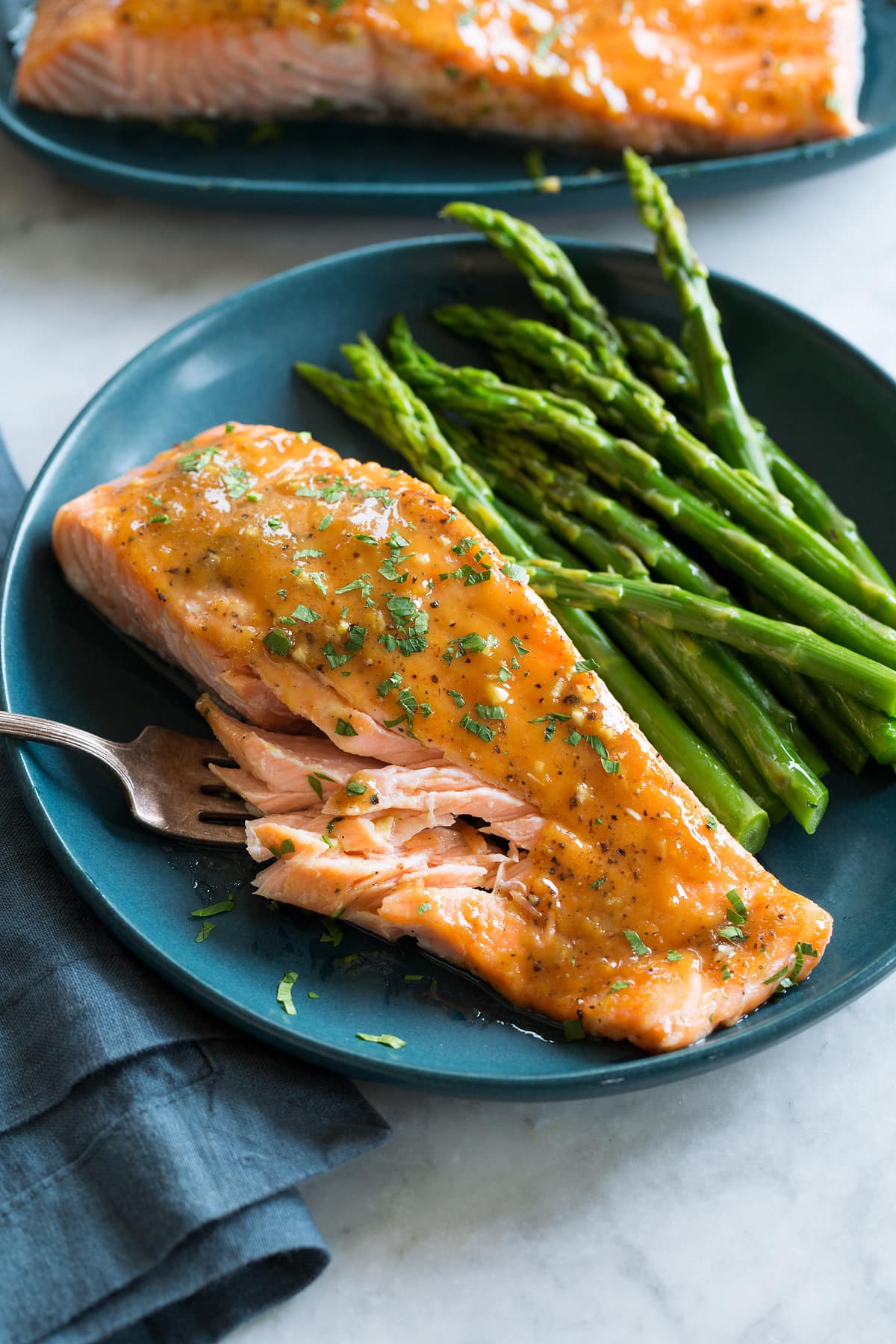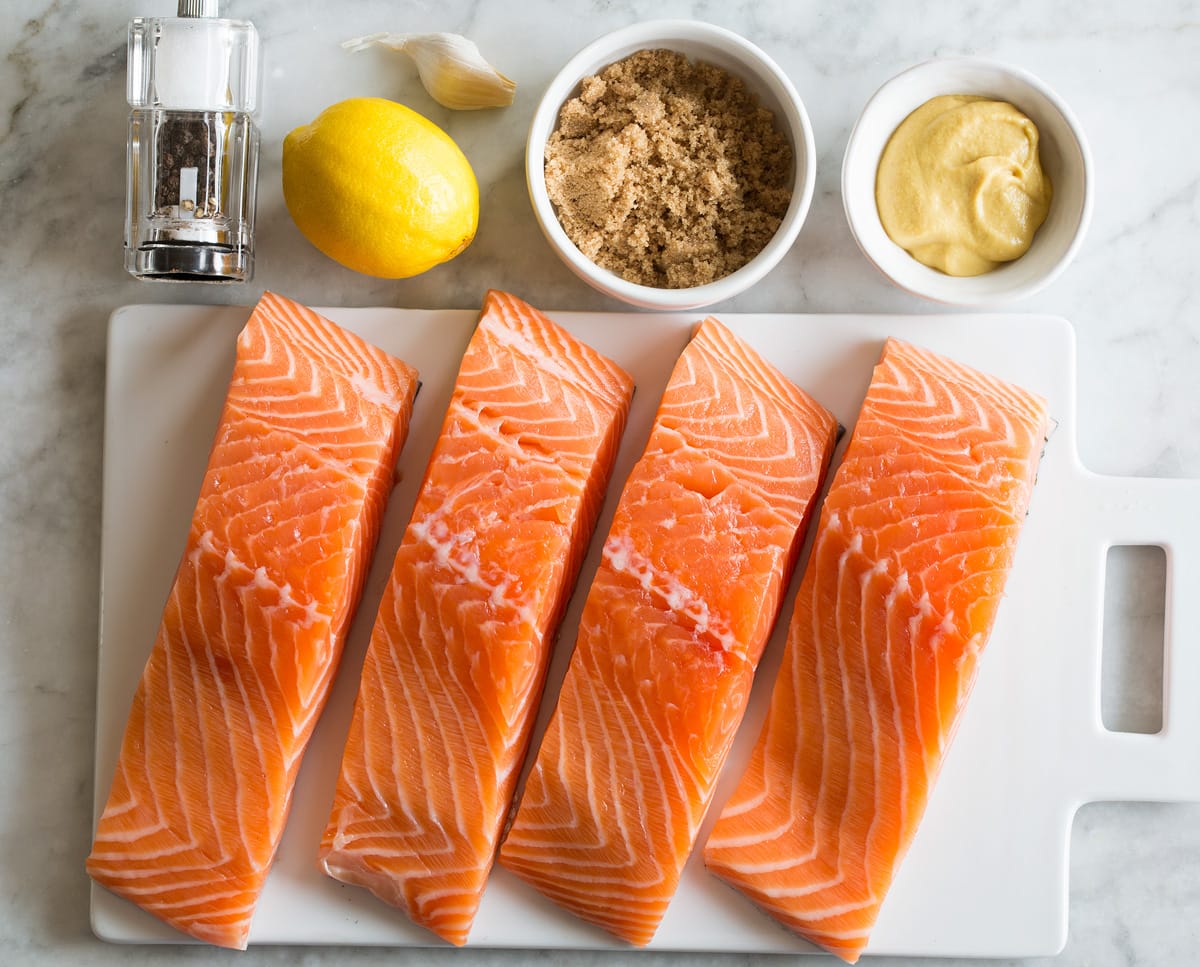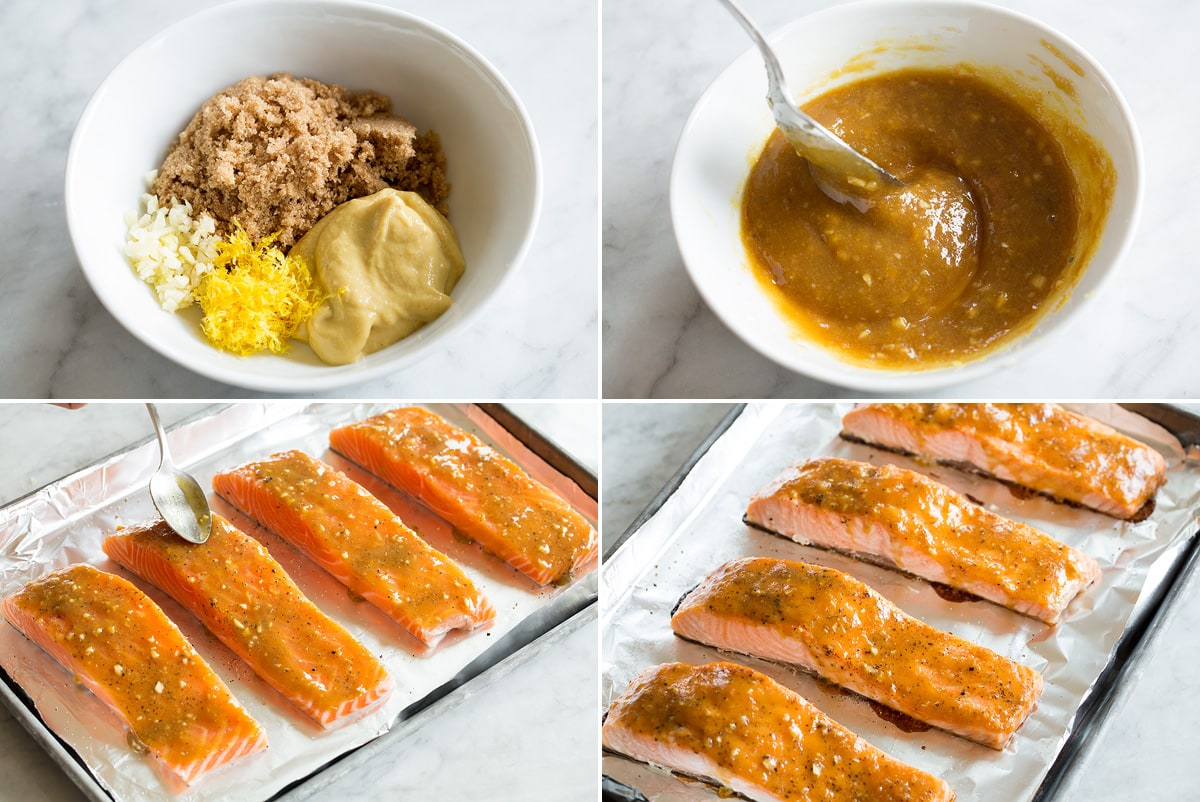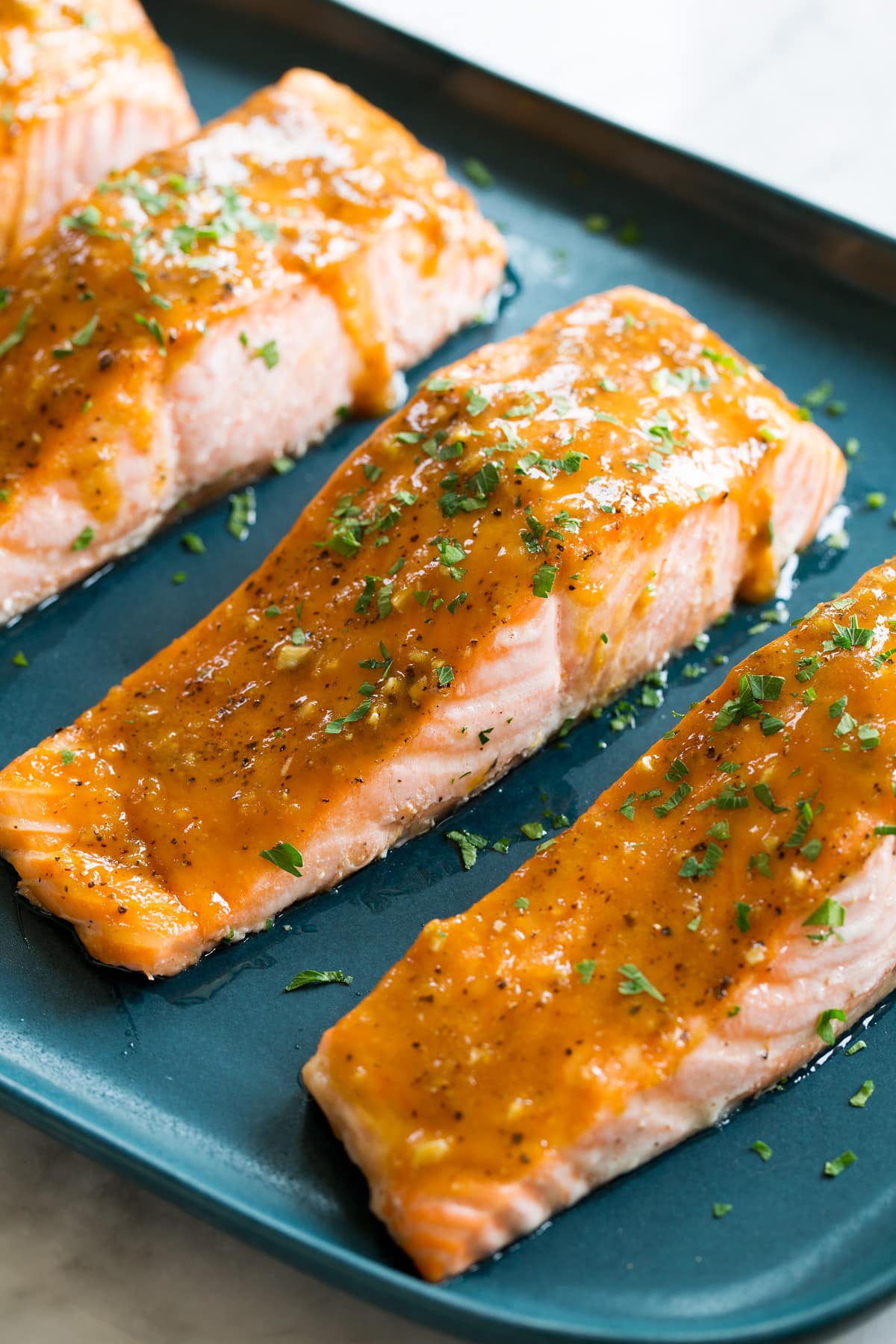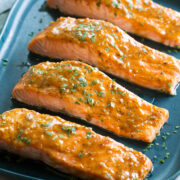5-Ingredient Brown Sugar Salmon
For this recipe you only need 5 ingredients (plus the standard salt and pepper)! And the prep couldn’t be easier. You don’t even need to remove the skin from the salmon. It will just easily peel away after baking. The glaze is sweet and tangy and pairs deliciously well with the buttery salmon. The combo of brown sugar and mustard works wonders here and a little lemon zest highlights those flavors. Pair it with steamed rice and asparagus for a quick, minimal-ingredient meal that’s both filling and delicious!
Brown Sugar Salmon Recipe Ingredients
4 (7 oz) skin-on salmon fillets Salt and freshly ground black pepper 2 Tbsp light brown sugar 2 Tbsp dijon mustard 1 tsp lemon zest 1 tsp minced garlic 1 tsp minced fresh parsley (completely optional)
How to Make Glazed Brown Sugar Salmon
Heat oven, prepare baking sheet: Preheat oven to 400 degrees. Line a baking sheet (13 by 9 or 18 by 13-inch) with aluminum foil, spray foil with non-stick cooking spray. Place salmon over, season: Align salmon pieces on baking sheet leaving some space between them. Season top with salt and pepper. Make glaze: In a small mixing bowl, whisk together brown sugar, mustard, lemon zest, and garlic. Spread over salmon: Spoon and spread brown sugar mustard mixture evenly over salmon. Bake until done: Bake in preheated oven until cooked through, about 11 – 14 minutes, depending on thickness of salmon. If desired garnish with parsley for a little pop of color.
Helpful Tips for the Baking Salmon
Use fillets that are close in thickness so they finish baking at the same time. Don’t forget to grease the baking sheet or salmon sticks. To cut out extra work, you can leave the skin-on individual fillets then just remove after baking. You can do this before serving or we usually just flake it away from the skin as eating with a fork. Check internal temperature of salmon for doneness (using an instant read food thermometer) so salmon doesn’t end up dry. I prefer salmon cooked internally to medium doneness for a tender flakey texture that’s moist (it’s still slightly rare looking in the center). Keep in mind once salmon is removed from heat the internal temperature will continue to rise about 5 degrees.
Temperature to Cook Salmon
Just like with meat, I recommend taking the internal temperature of salmon. While the possibility of food borne illness isn’t quite as risky with salmon as it is with beef or chicken, I still like to take the temperature because it takes out the guess work and you’re less likely to overcook the salmon. Note that the USDA recommends an internal temperature in the thickest portion of the fish to 145 degrees for food safety. Here’s a breakdown of temperatures for salmon doneness:
Rare: 110 Medium rare: 115 – 120 Medium: 125 – 130 Medium well: 135 to 140 Very well: 145
Possible Variations
You can bake a whole side of salmon (2 lb portion) rather then baking as individual fillets. Bake time will need to be increased by about 5 to 10 minutes. If you want to make it healthier you could sub honey for the brown sugar. For an added herby flavor you can try with herbs such as dill or thyme.
More Easy Salmon Recipes You’ll Love
Baked Salmon with Buttery Honey Mustard Sauce Blackened Salmon Broiled Salmon Marinated Grilled Salmon Salmon with Garlic Lemon Butter Sauce
